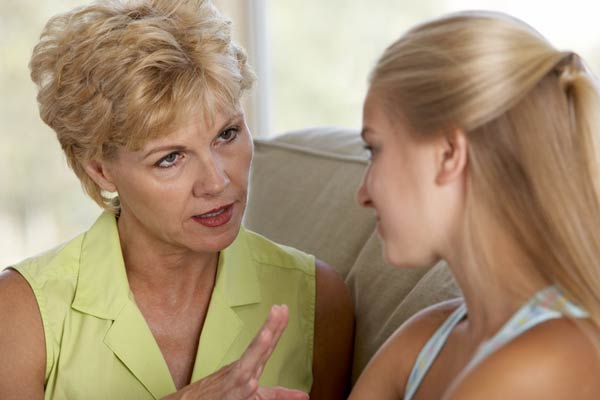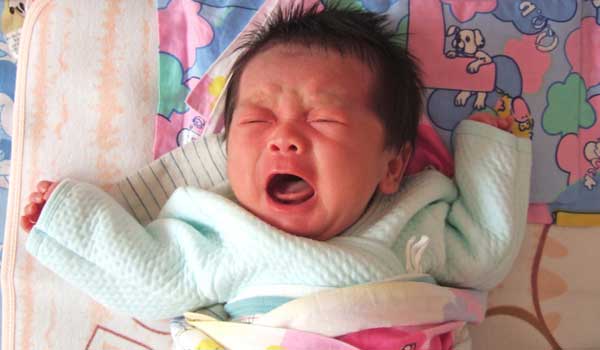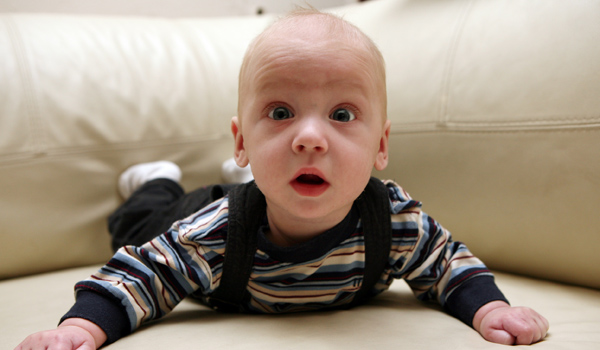7 Baby Myths Debunked

Introduction

One unexpected offshoot of becoming a parent is the endless advice offered by well-meaning relatives and friends (and occasionally strangers).
Some of the advice will be helpful. Other tips will seem, well, suspect. And they probably are. However well-intentioned these tips may be, some of them can have serious consequences if they're followed.
Dr. Rachel Vreeman, an assistant professor of pediatrics at the Indiana University School of Medicine in Indianapolis, has co-authored two books "Don't Swallow Your Gum!" (St. Martin's Press, 2009) and "Don't Cross Your Eyes...They'll Get Stuck That Way!" (St. Martin's Press, 2011) that explore and debunk myths about health at all ages.
Not all health myths are created equal, she said. Some, like the two that have served as the titles of her books, are things parents say, and are pretty harmless. That isn't always the case. "There are a few myths that might cause harm," she said.
There are plenty of products on the market that can present problems, too.
"You see them advertised all the time...so you think, well, if they've got it in the baby store it must be safe," said Dr. Sarah Denny, an emergency medicine physician and faculty member of the Center for Injury Research and Policy at Nationwide Children's Hospital in Columbus, Ohio. "Because of the way they're marketed, people think they're safe. In actuality, they're not safe at all."
Between bad advice and questionable products, what's a parent to do? Here, our experts debunk seven common baby myths.
Get the world’s most fascinating discoveries delivered straight to your inbox.
Babies need water when it's hot

Not true. Babies, like children and adults, need to stay hydrated. In some instances, a pediatrician may recommend giving a baby an oral rehydration solution. But most of the time, a baby's fluids should come from breast milk or formula.
Since a baby doesn't yet have fully functioning kidneys, her body isn't prepared to excrete water. As a result, it can cause an imbalance of electrolytes and sodium. A baby can start sipping water occasionally around six months, but check with the doctor first. After age 1, she can sip it more regularly.
Small doses of adult medicines are safe for children

A number of medications that help adults can be harmful for children even when the dosage is downsized.
Cough medicines even those designed for children aren't a good idea for babies or children under age 4, Denny said. She lists agitation, elevated heart rate and respiratory depression among the side effects babies and young children might develop if they're given cough medicine.
Medications, which ease congestion and sinus problems in adults, are also a no-no for babies and children. For example, Denny said, antihistamines or antibiotics might be given to adults who are congested or have a sinus infection. But a child whose sinuses are still developing should not expect the same result, and treatment might have a downside in the form of an upset stomach, a rash or diarrhea.
"Not only is there not a benefit, but children are more likely to have the bad side effects," Vreeman said. "You're essentially getting all the risk of the side effect ... and no benefit."
Teething can cause fevers in babies

The danger in some myths is that parents may ignore a problem. "Parents will often attribute fevers in babies and toddlers to teething," Vreeman said.
However, research has not shown a strong relationship between the two. What this means for parents, Vreeman said, is that a fever in a teething baby shouldn't be written off and medical attention should be sought to determine if something else might be causing the spike in temperature.
Certain videos can help babies learn sooner

Research has shown that specially produced programs can help young children learn, but those benefits only kick in at age 2 and older.
In 2011, the American Academy of Pediatrics reaffirmed its position discouraging the use of visual media for babies and toddlers, saying, "The educational merit of media for children younger than 2 years remains unproven despite the fact that three-quarters of the top-selling infant videos make explicit or implicit educational claims."
"Videos are like crack for a baby," Vreeman said. "The babies seem to watch with awe or attention. But the videos actually seem to lead to delays in language progression. There seem to be some delays with any screen time."
Walkers are a safe way to help babies walk earlier

While parents may buy walkers to keep their babies entertained and help little ones walk, the AAP has long recommended against their use.
"It's a perceived benefit that's not real and in fact is a danger," said Denny.
Some research has suggested walkers can slow a baby's ability to walk on his own. Also, the enhanced mobility is frequently a problem. A baby in a walker can quickly and unexpectedly approach a staircase, even under a parent's watch a problem known as "the myth of supervision."
"Many parents think that their child can use a mobile walker safely as long as the parent watches them closely," said Dr. Gary Smith, director of the Center for Injury Research and Policy at Nationwide Children's. "Unfortunately, although important, supervision is never sufficient by itself to prevent injury. This is because injuries typically happen very quickly before a parent has time to react." A safer choice: Standing-activity discs that let a baby stand in the center but leave off the problematic wheels, Denny said.
Crib bumpers are a safe way to protect babies' heads while they sleep

Far from it. Some parents may use crib bumpers, believing that a baby will hit his head on the side of the crib and get hurt. However, "a baby isn't generating enough force to cause any significant injury on the bars of the crib," Denny said.
Meanwhile, the risk of suffocation or sudden infant death syndrome (SIDS) from crib bumpers is high enough that the AAP recommends all soft bedding, including bumpers, be removed from an infant's crib.
Use breast milk to treat an ear infection

While breast milk may be the best way to feed a baby, Vreeman said she has heard that some people recommend using breast milk as more than a source of nutrition. In fact, some individuals advise parents to put a small amount of breast milk in a baby's or toddler's ear to treat an ear infection, a strategy that won't help and may cause a new infection, she said.
Breast milk does have some antibodies in it, which are helpful to the body," Vreeman said. "But it also has lots of sugars in it that bacteria love to grow on."
Because the eardrum seals off the area that's infected, breast milk won't reach the infection. And when the milk pools, it can attract bacteria.
"Breast milk is great, but only if you swallow it," Vreeman said. "Putting breast milk in places it's not supposed to be is a big risk."
Follow MyHealthNewsDaily on Twitter @MyHealth_MHND. We're also on Facebook & Google+.



